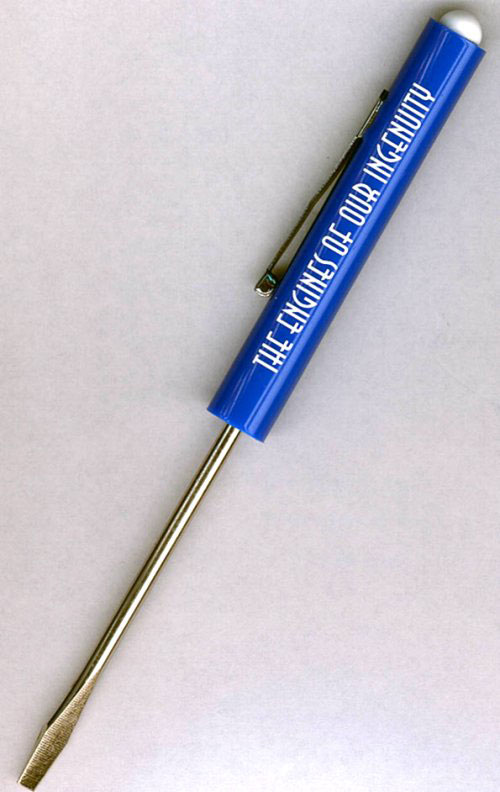Screwdrivers and Obviousness
Today, let's talk about screwdrivers. The University of Houston's College of Engineering presents this series about the machines that make our civilization run, and the people whose ingenuity created them.
A few years back, I did a program on Witold Rybczynski's book, One Good Turn — his history of screwdrivers. He found that screwdrivers are surprisingly new. They've been around only a few hundred years. Why did anything so obvious take so long to invent?
Actually, all sorts of things that involve turning were very hard to invent. The wheel wasn't invented until we'd had pottery and woven fabric for millennia. The hand crank was invented long after the waterwheel and indoor plumbing. The piston engine seems far more complicated than rotating turbine blades, yet we didn't have practical steam turbines until after we had telephones.
All of these things seem obvious. And yet, one of the requirements for an idea to receive an American patent is that it not be obvious. Well, I can't speak for you, but I find anything that I understand obvious, and everything else incomprehensible.
There's a story about a math professor at the blackboard. He reached one point in his derivation, and said, "Now it's obvious that this term can be neglected. So we ... Wait a minute." And he stared at the board for five minutes. Then he excused himself and went back to his office. A half hour later, he returned with a sheaf of scribblings and said, "Yes, it is obvious we can neglect that term. So we then ... " and he continued as though nothing had happened. The screwdriver is likewise so obvious that no one invented it until the eighteenth century.
I find my life has been littered with transitions from incomprehensible to obvious. And so many have to do with rotary or cyclic motion. How on earth does a differential gear let the two back wheels of a car rotate at different speeds? How does a sewing machine needle work? How did escapements work on mechanical clocks?
Here's another fact about screwdrivers that struck me as obvious, only after a technician pointed it out to me. He said, "I curse the guy who invented roundhead screws." And I suddenly realized that a roundhead screw offers the deepest slot to the screwdriver at its center, where the force is almost negligible. At the edge, where the force is greatest, the slot is most shallow. That makes a roundhead screw a whole lot easier to strip than a square one.
But roundhead screws have about gone the way of all flesh. Most have been replaced with a dizzying variety of more efficient heads — each one obvious in its function once we see it, but each one unimaginable before we do. Our world is afloat upon the obvious technology that flows from one person or another's non-obvious perception — five-wheeled chairs that don't tip over, octagonal pencils that don't roll off the desk, O-ring seals.
So our world divides into two parts, one obvious, one incomprehensible. The incomprehensible one is the joyous world — filled with all the wonders yet to be invented: quantum computers, teletransporters — and, perhaps, even the perfect screwdriver.
I'm John Lienhard, at the University of Houston, where we're interested in the way inventive minds work.
(Theme music)
For more on the history of the screwdriver, see Episode 1581. My thanks to colleagues Lewis Wheeler and Mike Dingus for their valuable counsel.
